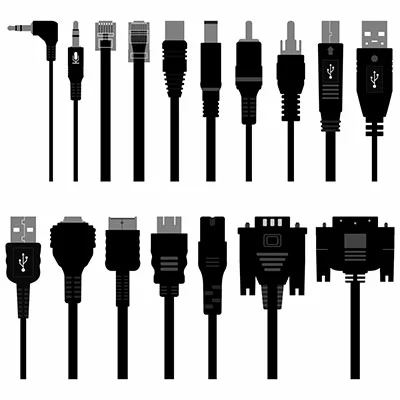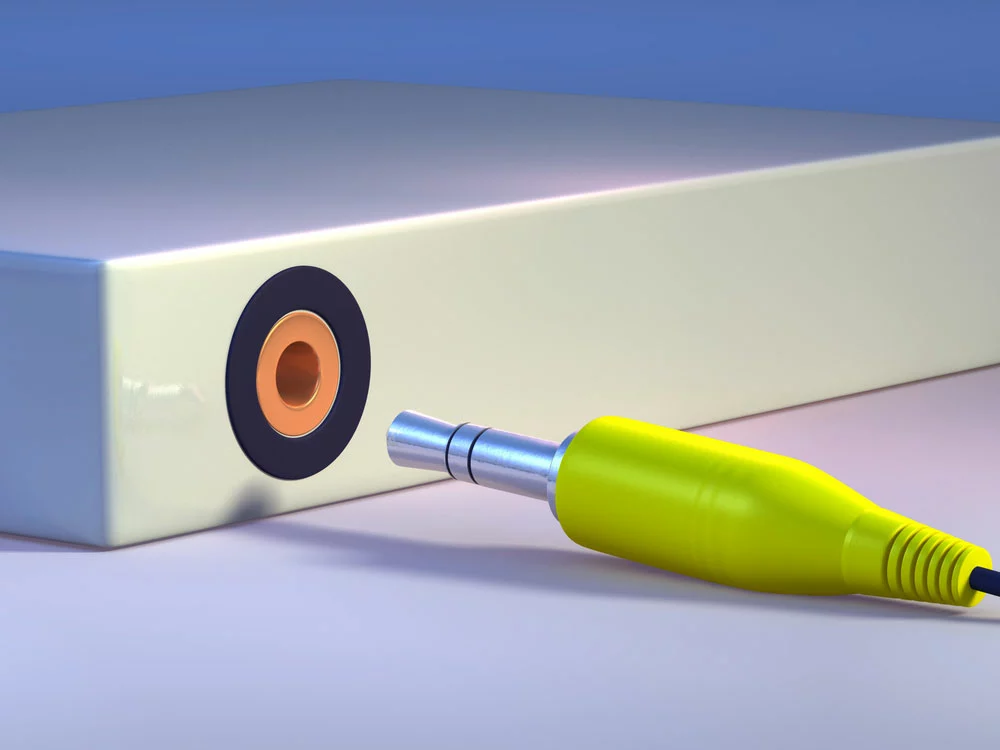People frequently refer to the speaker interconnect as a “cable,” even though a speaker cable and a speaker interconnect are different. Although they can serve the same purpose, they differ in their construction. Let us see what the audio internnects cable is and how it differs from simple speaker cables.
Table of Contents
- What are audio interconnect cables?
- Why Do You Need Speaker Interconnects?
- Speaker Cable vs. Interconnect
- Does Length Matter for Speaker or Audio interconnects cable?
- Audio interconnects cable: Do you need high-end, premium audio cables?
- Conclusion

Caption: Common Audio cables
What are audio interconnect cables?
A speaker interconnect is a cable that joins two speakers or other audio/musical devices. There are only two examples of connecting digital radios to preamps or woofers to AV players and sound system processors. Additionally, you can use XLR and RCA jacks for connections.
Why Do You Need Speaker Interconnects?
You can think of any wire that isn’t a speaker wire as an interconnect. Because of low voltage and amperage levels, they cannot generate substantial amounts of power. Typically, these cables connect audio components to different kinds of audio (or multimedia) equipment to boost signals or improve sound quality.
A few examples of speaker interconnects are high-definition multimedia interface (HDMI) cables and analog audio phono cables. However, as a side note, more power doesn’t always mean better sound. Hence, if you’re using connectors to link a subwoofer to your TV, the sub’s relatively low power output won’t necessarily compromise the quality of the sound. To the “low-power” rule, we can only add USB and HDMI cables.

Caption: Pin connector with audio cable
Speaker Cable vs. Interconnect
It’s important to remember that while a cable is not an interconnect, an interconnect is always a cable. Moreover, manufacturers use basic wires to construct cables and interconnects, with different conductive metals such as silver, copper, or aluminum used for each.
Audio interconnects cable: Speaker Cable Connectors
Although the wire material is the same as the cables and interconnects, their distinction comes from the termination point. So, choose the connector type for your speaker cables based on personal choice.
Bare wire connectors are fine for speaker cables because they primarily transfer power (wattage) from amplifiers to speakers.
Below are the several options for speaker cable plugs:
- Binding Posts: You can use banana plugs, spade connectors, bare wires, and pin connections with the binding posts on your speakers.
- Spade Lug: A spade lug is a speaker terminal with a forked prong that can be crimped or screwed into the connection. You can connect them to a screw terminal or binding post.
- Banana Hookups: These cords feature a single wire and either a plug or a socket at one end. In addition to providing ample current for speakers, they frequently used it to test lab equipment.
- Pin Connectors: These are just little versions of regular banana plugs. While the pin plugs don’t feature the metal spring found in banana plugs, they may still be with binding posts.
Audio interconnects cable: Interconnect Cables
The ends of interconnects are where they get very interesting. Each form of termination can serve more than one distinct function, which is not the case with speaker cable connectors.
- HDMI: High-Definition Multimedia Interface (HDMI) is a complete subfield of technology developed to send high-definition, good-quality audio and video signals. External speakers are often connected to TVs using HDMI cables. The end of an HDMI cable has a trapezoidal connection that fits into a port of the same form. Unlike RCA, which requires two cables, HDMI only needs one to deliver crisp, high-quality video and surround sound.
- RCA Cables: The three colored plugs on this cable’s line end correspond to jacks located behind TVs of the same color. RCA cables transport video and audio signals from devices like players to receivers like a TV.
- USB Cables: Speakers and hard disks are only a couple of the many devices that can be connected through USB cables to your TV or computer. These cables transform audio input to analog, so it sounds better than what you’d get from your computer’s built-in speakers. As an added bonus, USB connections move the transmission away from other electronic systems in your computer, which might reduce interference.
- XLR jacks: When it comes to high-quality audio and video, professionals rely on XLR connectors. They are permitted between three and seven writing instruments. DMX cables evolved from XLR wires and are used mostly in the lighting industry. Though DMX is not specifically designed for audio equipment, it can be used with it.
As you can clearly see, the difference between speaker cables and interconnects is their intended purpose. However, on the other side, “speaker” interconnects aren’t only in speakers; You can use them with any output device.
Does Length Matter for Speaker or Audio interconnects cable?
The “power” of the signal diminishes as it travels from one end of a long cord to the other. Whether you’re utilizing a speaker or connecting cables, shorter cords are preferable. That’s because cables prevent voltages from becoming unsafe when they go from one audio piece of equipment to another.
There is a small difference between how useful long speaker cables are and how useful long connector connections are. An amplifier must work harder to push the same amount of energy over a longer cable to prevent power loss along the speaker line. If you have a long way to transfer your speakers, the signal may degrade more if the cord is quite thick.
Long speaker cables aren’t as effective as short ones, yet interconnect cords still have their uses. Now, you wonder if there is the shortest possible cable that yet provides a good connection to the source devices. Thankfully, the negative answer is true. You are free to use the shortest possible cords. If you have a two-foot connecting cable, by all means, utilize it.
There may be times, though, when you need to keep your tools considerably from one another. There are times when longer cords are necessary, but in general, 8-10 feet is the sweet spot.
Audio interconnects cable: Do you need high-end, premium audio cables?
Many people will insist that you must invest in high-priced, high-quality cables if you want the best possible sound from your speakers. However, there are some misconceptions about high-end audio cables that you should know. It will help you in making an investment decision.
There are those who believe it is pointless to invest heavily in expensive interconnect cables. Unless you’re an expert on this subject, you probably won’t hear a difference. Regular music fans don’t need the slight improvements in sound quality that high-end cables can offer.
The answer to the question of whether or not you require high-quality cables lies, therefore, between the two extremes. The high-priced cables are worth it if you are an expert in that field and want crystal-clear sound, but they’re unnecessary for casual Netflix-watching.
Conclusion
There isn’t much of a difference between the speaker cables and interconnects. However, the latter serve a wider range of purposes. For example, High-Definition Multimedia Interface (HDMI) cable links a stereo or video game system. Wiring speakers to amps and woofers require certain pin connections. Also, the shorter the wires are, the better sound quality you will get.
Here at Cloom, we offer custom cable assemblies and wiring harness solutions to make your connection reliable.
